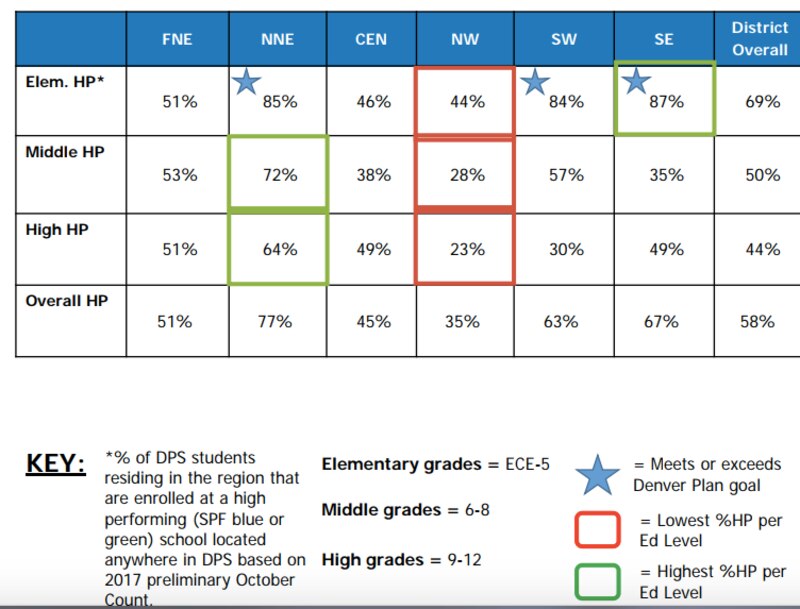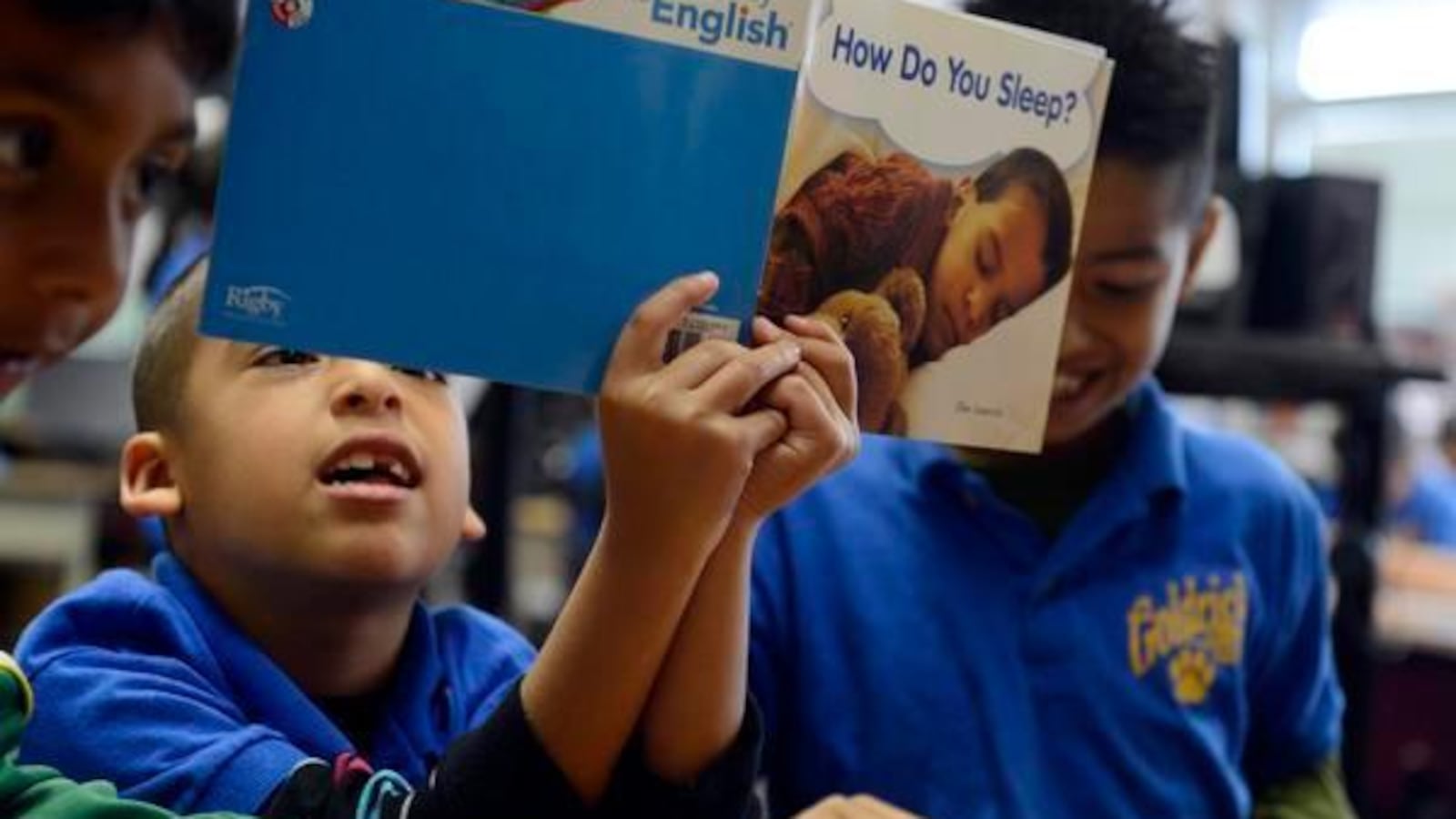After growing for nearly two decades, the student population in Denver Public Schools is forecast to drop almost 2 percent by 2021, according to a new analysis released by the district.
The main reasons, the analysis concludes, are lower post-recession birth rates and rising housing prices, which are pushing lower-income families out of the city.
But the decrease won’t be felt in every neighborhood, it says. Some parts of the city, like the booming near northeast Stapleton neighborhood, are expected to see increases. Meanwhile, more than half of the city’s 78 neighborhoods are predicted to experience drops in enrollment. Southwest Denver, home to many Latino families, will be among the hardest hit.
For at least three regions of the city, district planning officials recommend considering a controversial solution: consolidating schools, especially at the elementary level.
The enrollment predictions are the work of the Denver Council of Regional Governments and the Shift Research Lab, which is affiliated with the local children-focused Piton Foundation. (The Piton Foundation is a funder of Chalkbeat.)
This year is the first that Denver Public Schools commissioned an independent, five-year enrollment forecast as part of its annual “strategic regional analysis,” which also examines school capacity and performance in an attempt to identify trends and issues.
Given the rapid pace at which the city is changing, the district wanted an expert opinion, explained Brian Eschbacher, the district’s executive director of planning and enrollment services. The district also hoped having an independent third-party conduct the forecast would give skeptical community members more confidence in the numbers, he said.
The analysis was released publicly at a school board work session Thursday.
Here are 12 takeaways from the 105-page document:
1. At the moment, district enrollment is still growing. But it’s growing at a slower pace than it has over the past 10 years, during which time DPS has worked to recapture families who left the city’s public schools. Enrollment is up just 0.4 percent this year to a total of 92,686 students.

2. By 2021, enrollment is forecast to be down to 91,201 students.
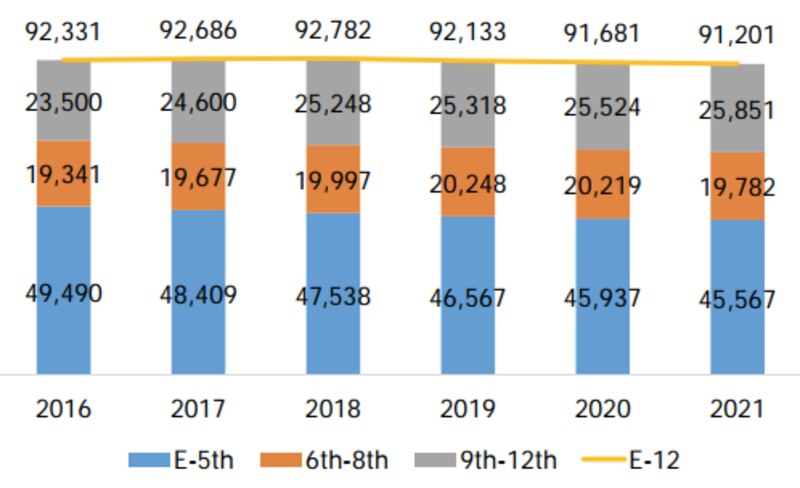
3. Elementary schools will be the hardest hit. By 2021, elementary enrollment is forecast to decline by 7 percent. Middle school enrollment is expected to stay steady because it won’t yet be affected by lower birth rates. High school enrollment is predicted to increase as the students who contributed to the district’s growth over the past decade get older.
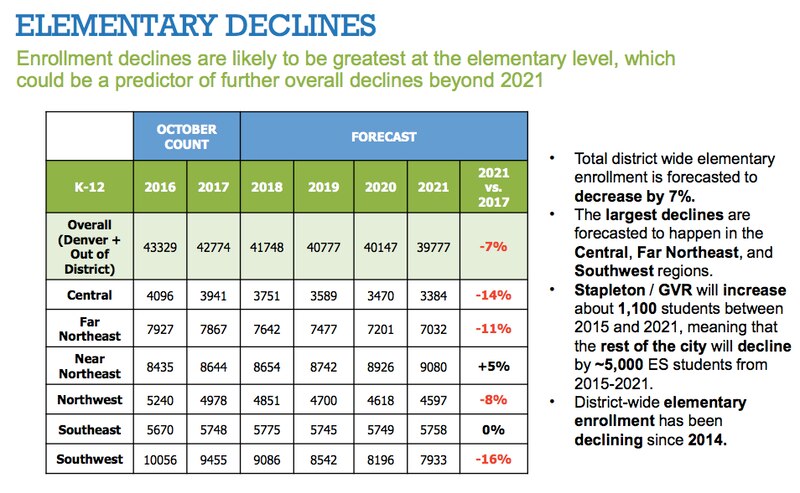
4. The neighborhoods that are expected to experience the largest enrollment declines are Montbello in far northeast Denver; Elyria-Swansea, Cole, Five Points and Whittier in central Denver; Sunnyside in northwest Denver; and West Colfax, Villa Park, Athmar Park, Westwood and Ruby Hill in southwest Denver. The district has flagged the areas for further study.
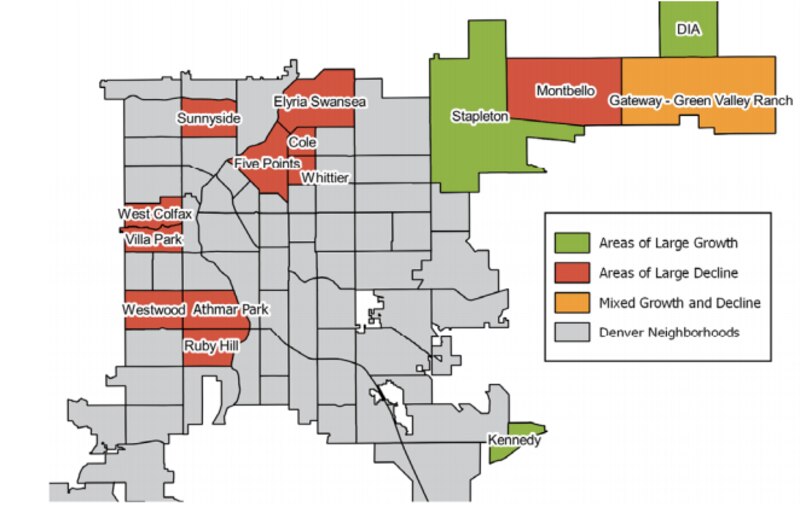
5. The southwest part of the city is forecast to lose the most students by 2021: nearly 2,000. Most of the decline is expected to happen at the elementary level. Planning officials are recommending that “excess capacity and enrollment declines should be closely monitored going forward, particularly at the elementary level, and consolidation should be considered if school budgets are unable to sustain viable programs.” Officials made similar recommendations for two other regions, as well: the gentrifying central and northwest parts of the city.
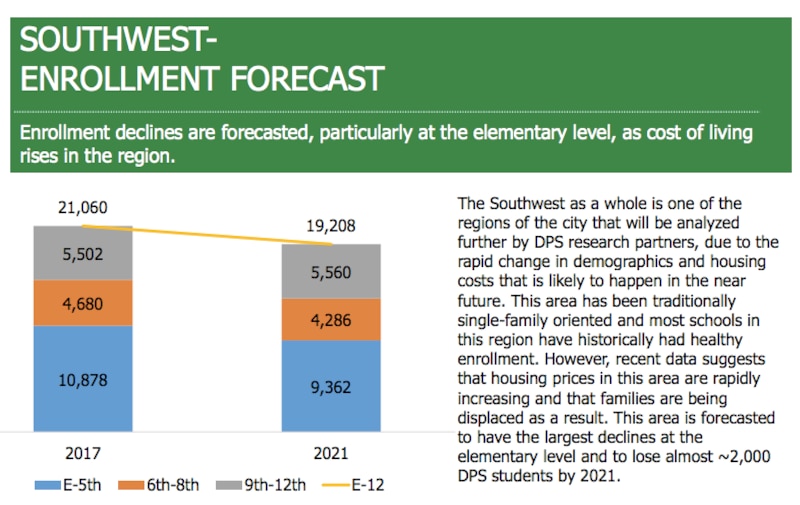
6. The near northeast region is the reverse. Due in part to continued development in the middle- and upper-income Stapleton neighborhood, it’s expected to gain the most students by 2021: more than 2,300. The biggest gains are forecast at the high school level.
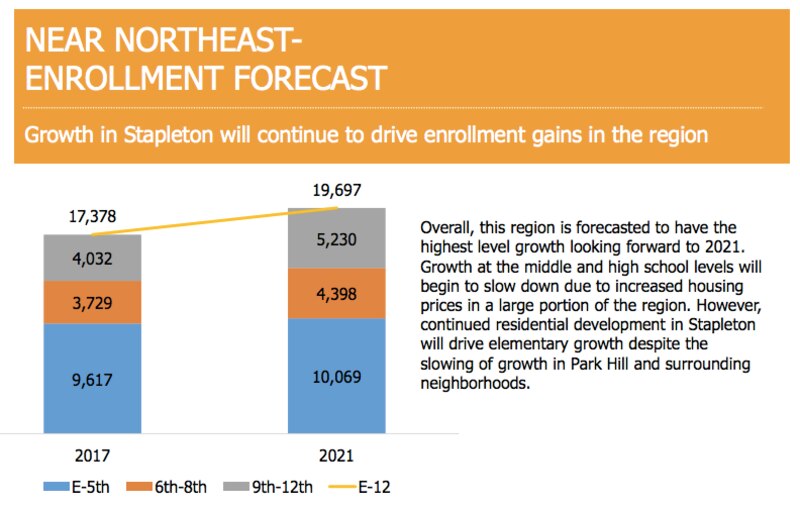
7. Denver Public Schools loses students each year to neighboring school districts, but it receives students from them, too. In 2016, more than 5,000 students who live in Denver attended school in a suburban district. However, about 4,500 students from suburban districts attended school in Denver, resulting in a net loss of about 500 students for DPS.

8. The overall student population in Denver Public Schools continues to get more affluent and more white. This year, the percentage of students who qualify for free or reduced-price lunch, a proxy for poverty, is down 1 percent. The percentage of white students is up 1 percent. Both changes are in line with demographic trends occurring over the past five years.
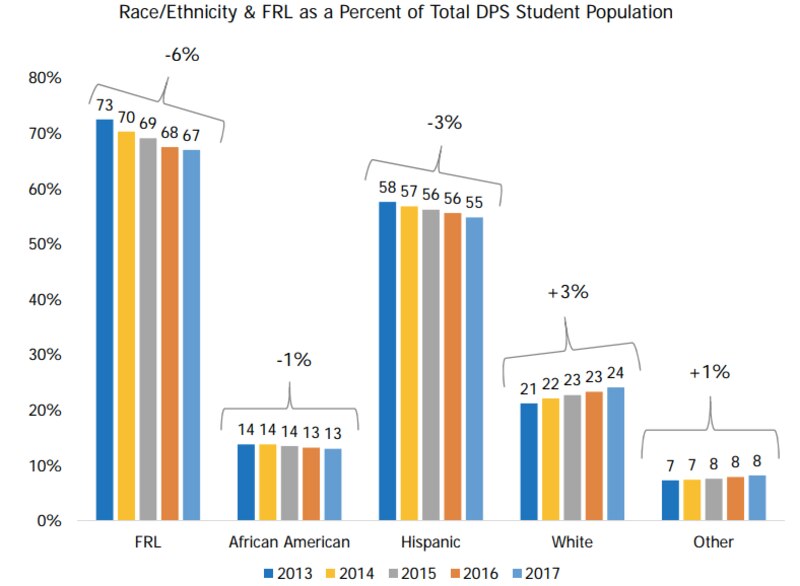
9. Low-income students, non-white students and English language learners are less likely to attend schools the district deems high quality than wealthier, white, non-English-learners. But the gaps between the percentages of less privileged and more privileged students attending quality schools has shrunk over the past five years.
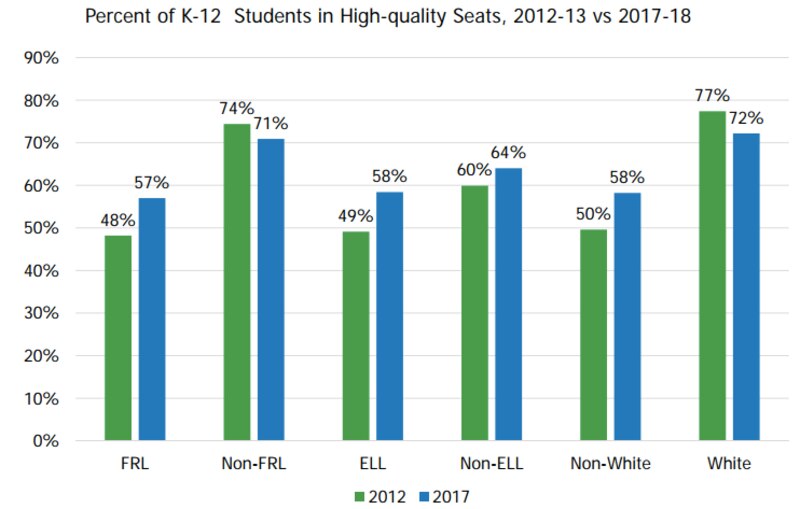
10. Denver has universal school choice, which means students can request a seat in any of the district’s traditional, innovation or charter schools. White students participate at a higher rate than non-white students. But English language learners and non-English learners participate at the same rate: 83 percent. This year, 4,400 students in the so-called transition grades of kindergarten, sixth and ninth grade who participated in school choice and whose assigned schools are lower performing are attending a school the district considers high quality.
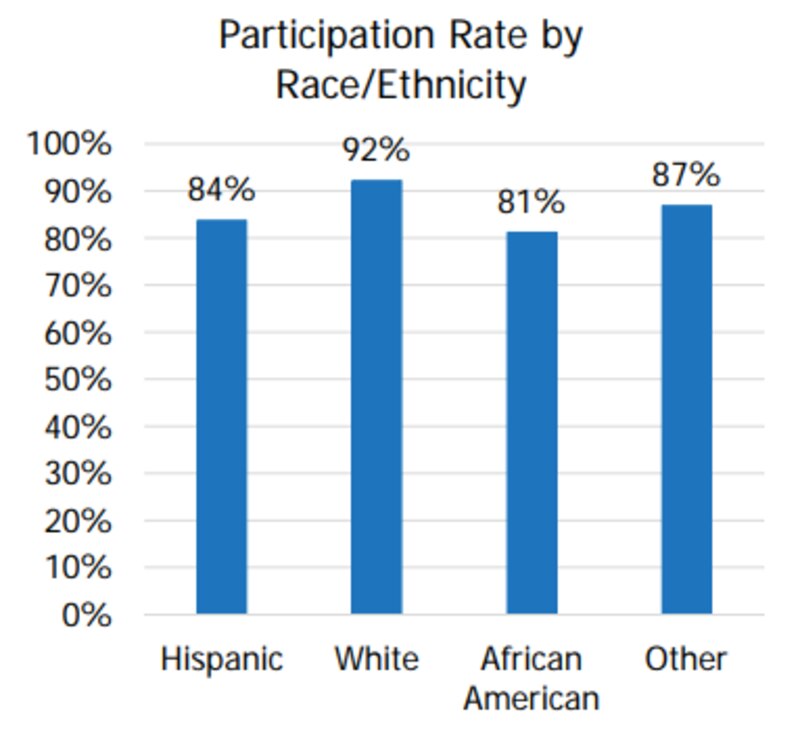
11. Districtwide, 70 percent of elementary school students are attending high quality schools, or schools rated blue or green on the district’s color-coded scale, which is an increase from last year. That percentage is lower for the upper grades: 53 percent of middle school and 48 percent of high school students attend blue and green schools. The high school percentage has stayed relatively steady over the past few years, but the middle school percentage has declined.
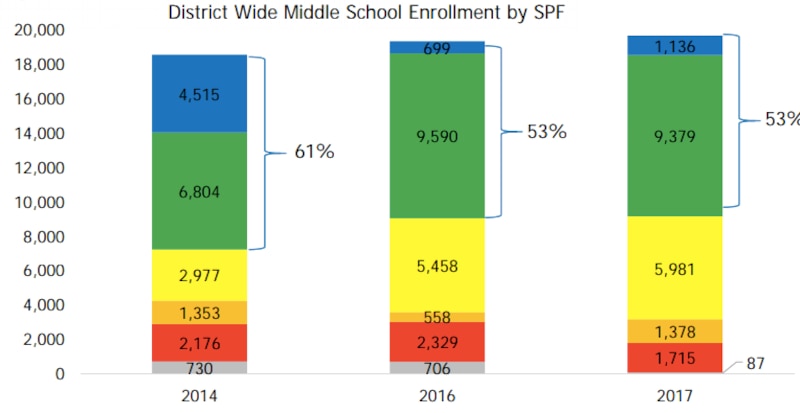
12. The district has set a goal that 80 percent of students residing in each region of the city will attend a blue or green school by 2020. While it has yet to meet that goal in any region, it has made some progress, especially at the elementary school level.
